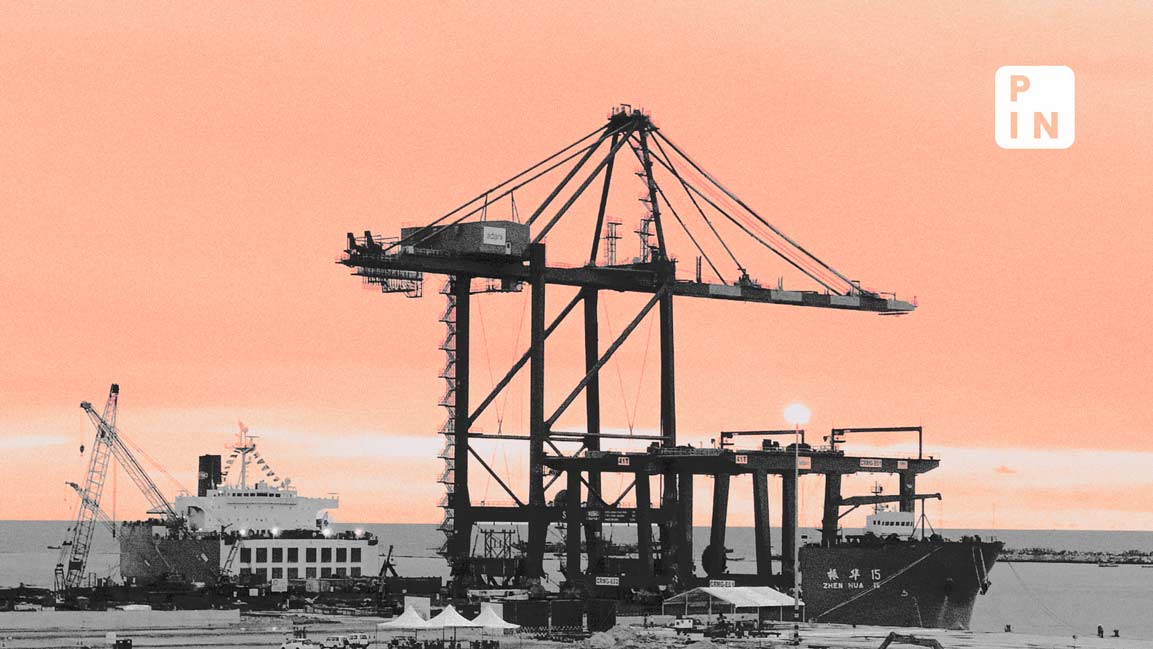- | 3:59 pm
Vizhinjam beckons world’s biggest container ships
Transshipment container port welcomes first cargo vessel Zhen Hua 15 as India eyes bigger pie of global maritime trade

The under-construction transshipment container port at Vizhinjam in Kerala welcomed Zhen Hua 15, a heavy-load cargo vessel sailing from the East China Sea, over the weekend as it brought in cranes for building the seaport.
Vizhinjam, which is India’s first transshipment container port, is strategically located close to major global trading routes and has a natural depth of more than 18 meters, a crucial parameter to lure the world’s biggest ships.
Big container ships have been giving India the miss thus far as its harbors aren’t deep enough to handle mega vessels, and were docking at neighboring Colombo, Singapore, and Dubai.
The mega Vizhinjam port, which is expected to begin operations between May and December next year, will allow India to grab a bigger pie of global maritime trade, which is currently dominated by China.
A transshipment container port acts as a relay station where cargo is transferred from one vessel to another. By serving as a central hub where multiple smaller shipments are consolidated into larger loads, such a port maximizes efficiency and minimizes costs, making long-haul ocean voyages more economical.
The Vizhinjam port will initially be able to handle up to 1 million 20-foot containers, also known as TEUs, with plans to expand its capacity by another 6.2 million TEUs in later phases.
By increasing its capacity to handle a large amount of cargo, the port aims to lower shipping and logistics costs. This, in turn, will support India’s goal of becoming a major center for global manufacturing.
“The upcoming ports at Vizhinjam and Vadhavan (Maharashtra) have natural drafts in excess of 18 meters that would enable ultra large container and cargo vessels to call, thereby boosting efforts to make India the world’s factory,” the ministry of ports, shipping and waterways said in a statement in February.
The deep-sea port, which is situated along Kerala’s scenic coast, is being developed by India’s largest private sector port operator, Adani Ports and Special Economic Zone Ltd.
The Vizhinjam port could boost India’s sustainability ambitions, while becoming a threat to ports such as Singapore.
“Vizhinjam will be a global bunkering hub supplying clean, green fuel like hydrogen and green ammonia. When completed, the port will be one of the greenest ports in the world,” Adani Ports chief executive and managing director Karan Adani said.
Singapore Energy Market Authority director Toh Wee Khiang said the port could give India an edge over existing refueling ports like Singapore.
“India has a chance to become a key refueling station for eco-friendly fuels like ammonia. Since ammonia holds less energy per volume than traditional ship fuels, vessels will either need larger fuel tanks, reducing cargo space, or will need to refuel more frequently,” Khiang wrote on LinkedIn.
Strategically located, with 60% of its capacity on India’s west coast and the remaining 40% on the east coast, Adani Ports’ facilities account for nearly a quarter of India’s total port capacity.
As of 31 March, Adani Ports boasted an operating capacity of 558 million metric tonnes per annum across 11 domestic ports and terminals.
In fiscal 2023, the company generated a revenue of ₹20,852 crore and handled 339 million metric tonnes (mmt) of cargo, or about 23% of the cargo that all the ports in India handled.
Adani Ports, which is also developing Israel’s Haifa port and plans to build a hub in Vietnam, has a 30% share in Vizhinjam.
Meanwhile, operations at Adani’s Haifa port have been hit in the wake of the Israel-Hamas conflict amid a growing backlog of ships and cargo, sending Adani Ports’ shares tumbling over the past week.
“The overall contribution of Haifa in APSEZ’s numbers is relatively small at 3% of the total cargo volume,” a spokesperson for Adani Ports said last week.
In a separate development, Prime Minister Narendra Modi is scheduled to inaugurate the third edition of the Global Maritime India Summit 2023 on Tuesday.
The Indian government is working on Maritime India Vision 2030, which seeks to develop world-class mega ports and transshipment hubs, and modernize infrastructure at an estimated cost of ₹1.25 trillion.










